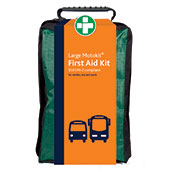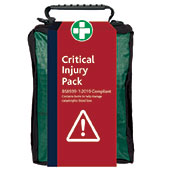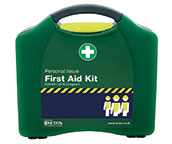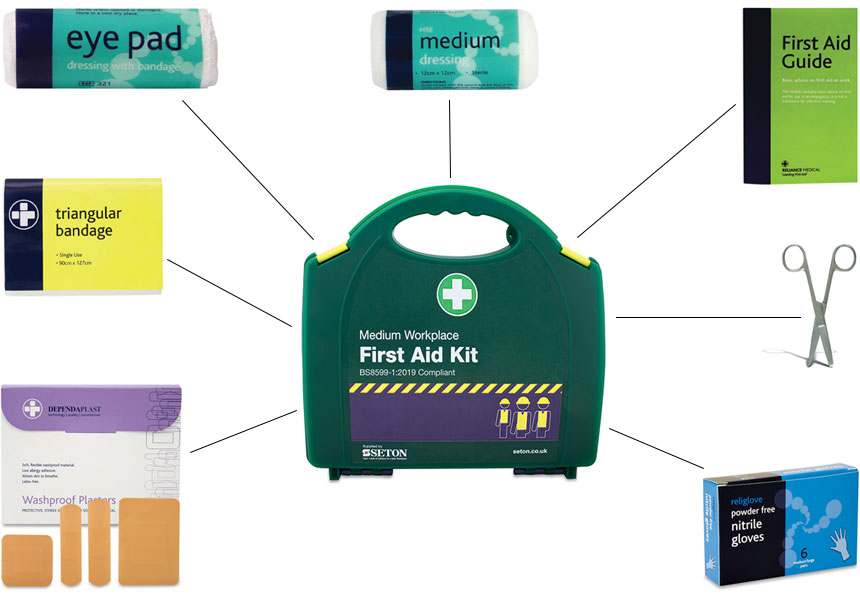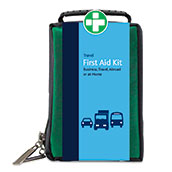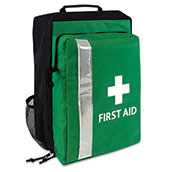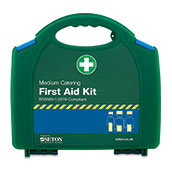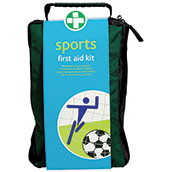-

British Standard First Aid Kits
From £21.45 To £30.50Supplied in: Single -

Major Incident First Aid Kit
£225.43Supplied in: Single -

British Standard Compliant Grab Bag First Aid Kit
£46.82Supplied in: Single -
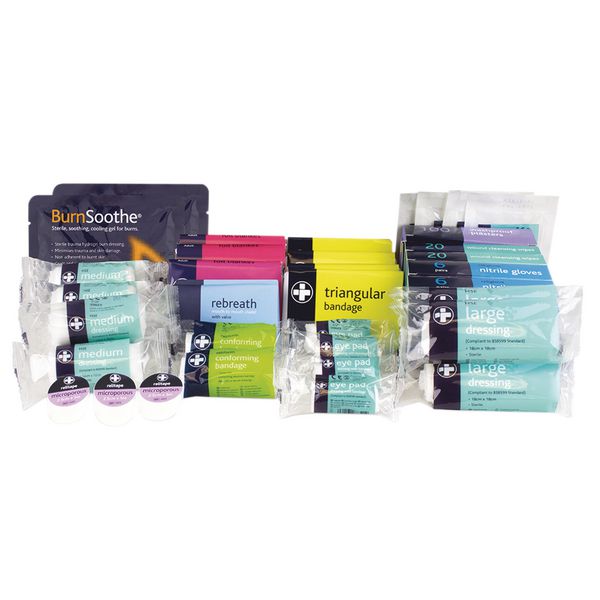
British Standard Compliant First Aid Kit Refills
From £15.54 To £26.02Supplied in: Single -

British Standard Compliant Deluxe First Aid Kits
From £39.14 To £59.21Supplied in: Single -

British Standard Compliant Vehicle First Aid Kits
From £11.23 To £34.47Supplied in: Single -

BS First Aid Kit and Eye Wash Bundles
From £29.19 To £49.99Supplied in: Single kit -
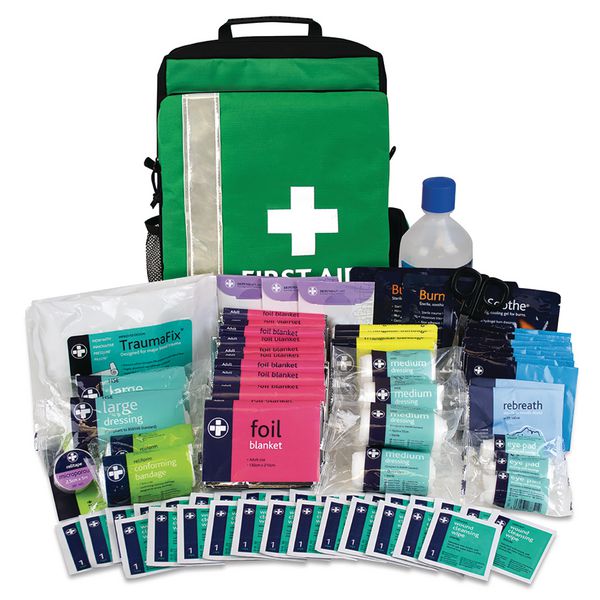
First Response Rucksack First Aid Kit
£76.32Supplied in: Single -

HSE First Aid Kits
From £8.89 To £28.07Supplied in: Single -
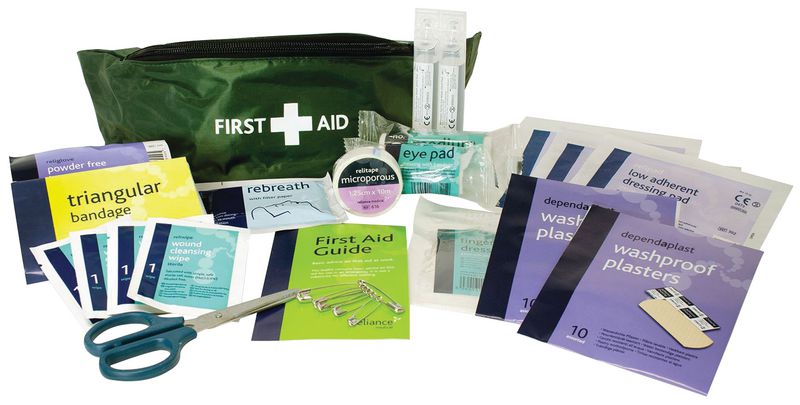
Bum Bag First Aid Kit
£12.89Supplied in: Single -

Travel First Aid Kits
£14.84Supplied in: Single -

HSE First Aid Kit Refills
From £10.34 To £28.08Supplied in: Single -

First Aid Kit Wall Bracket
£1.89Supplied in: Single -

Bleeding Control Kit
£217.00Supplied in: Single kit -

Small Deluxe First Aid Wall Station
£159.07Supplied in: Single kit -

Catering First Aid Kit Refills
From £20.78 To £37.81Supplied in: Single -

Critical Injury Kit
£162.00Supplied in: Single kit -

Burns First Aid Kit in Carry Bag
£30.51Supplied in: Single -

British Standard Catering First Aid Kits
From £26.00 To £53.39Supplied in: Single -

First Response First Aid Kit In Shoulder Bag
£31.89Supplied in: Single -
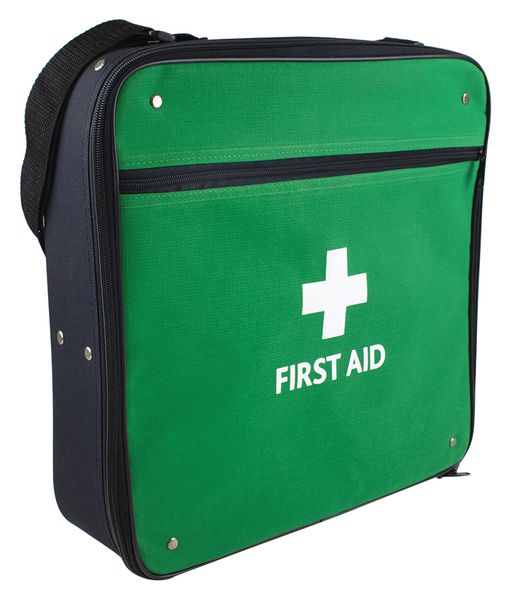
Empty First Aid Kit Bag
£16.99Supplied in: Single -

British Standard Compliant First Aid Kit in Soft Bag
£19.50Supplied in: Single -

Workplace First Aid Bundles
From £50.09 To £53.49Supplied in: Single kit -

School Trip First Aid Kit
£75.59Supplied in: Single -

British Standard Economy First Aid Kits
From £17.65 To £28.35Supplied in: Single -

Seton Deluxe Chemical Splash Kit
£29.99Supplied in: Single kit -

Replacement Case for Deluxe First Aid Kits
£26.37Supplied in: Single -

Standard Trauma Kit
£251.00Supplied in: Single -

Construction First Aid Kit
£26.29Supplied in: Single kit -

Portable First Aid Rucksack With Detachable Kit
£37.62Supplied in: Single -

Public Access Bleeding Control Station
£1,994.00Supplied in: Single -
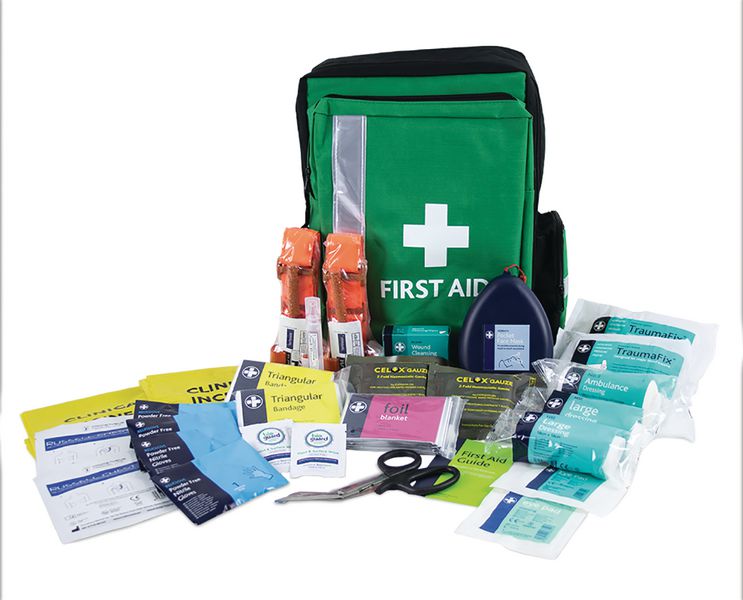
Security Trauma Kit
£329.00Supplied in: Single -

British Standard Rucksack First Aid Kit
£72.99Supplied in: Single -

First Aid Bum Bag
£5.28Supplied in: Single -
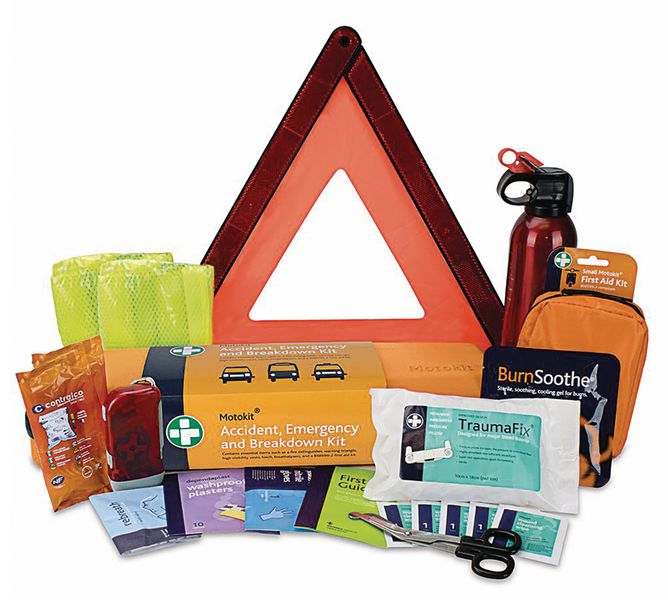
Roadside Emergency First Aid Kit
£71.73Supplied in: Single -

BS Compliant Vehicle First Aid Kit Refills
£11.89Supplied in: Single -

British Standard Rucksack First Aid Kit Refill
£42.47Supplied in: Single -

Photoluminescent Workplace First Aid Kits
From £40.11 To £63.02Supplied in: Single kit -

Personal Issue First Aid Kits
From £7.90 To £12.95Supplied in: Single kit -

First Aid Catering Stations
From £174.29 To £188.09Supplied in: Single -
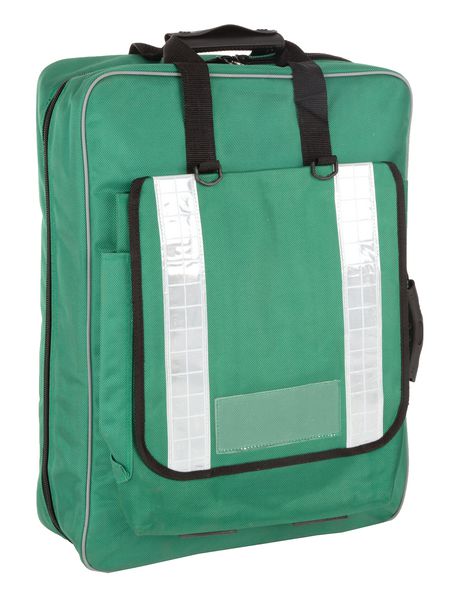
Empty British Standard First Aid Rucksack
£46.79Supplied in: Single -

Forestry First Aid Kit
£67.45Supplied in: Single -

Industrial Trauma Kit
£270.00Supplied in: Single -

Acid Attack Kit
£65.65Supplied in: Single -
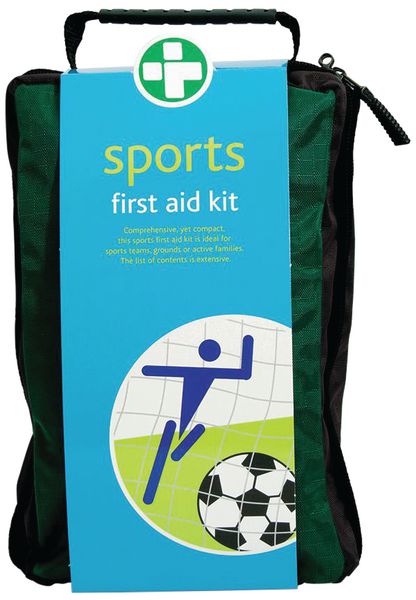
Sports First Aid Kit
£22.23Supplied in: Single -

Catering First Aid Combination Kit
£55.19Supplied in: Single kit -

Fast Response First Aid Kit in Belt Wallet
£8.54Supplied in: Single -
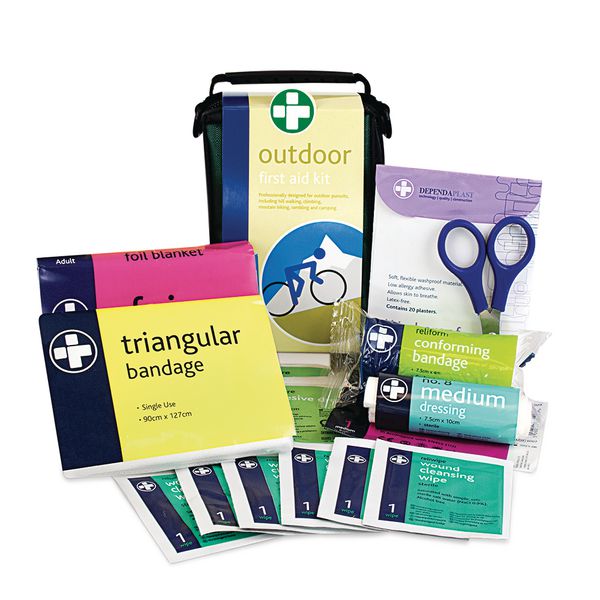
Outdoor Pursuits First Aid Kit
£15.31Supplied in: Single kit -

Modular BS Compliant Catering First Aid Mini Stations
From £65.19 To £76.59Supplied in: Single -

Football First Aid Kit (FA Approved)
£42.51Supplied in: Single -

Agriculture Trauma Kit
£265.00Supplied in: Single -

Photoluminescent Burns First Aid Kit
£45.81Supplied in: Single kit -

Large Sports First Aid Kit Refill
£29.09Supplied in: Single -

MediKids First Aid Kit
£8.81Supplied in: Single Pouch -

Childcare First Aid Kits
£24.93Supplied in: Single -

Winter Car Care Kit
£39.69Supplied in: Single kit -

Playground First Aid Kit
£9.88Supplied in: Single -
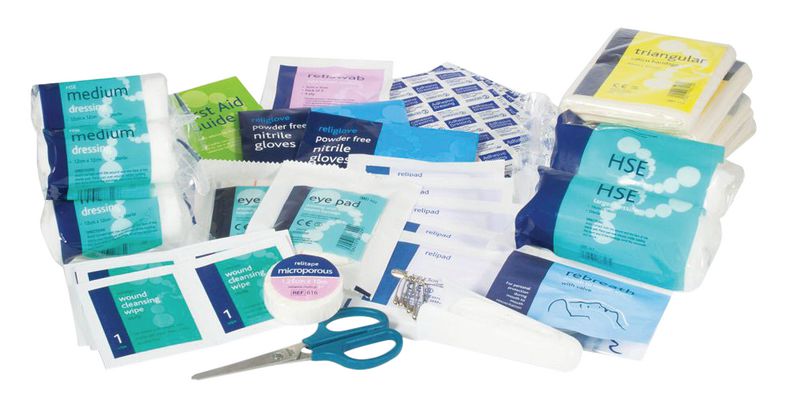
Refill For Child Care First Aid Kit
£14.18Supplied in: Single -

Photoluminescent Catering First Aid Kits
From £42.74 To £64.90Supplied in: Single kit -

First Aid Biohazard Station Refills
£67.19Supplied in: Single -

First Aid Catering Stations - Unstocked
£130.79Supplied in: Single
First Aid Kits
Top-Rated UK Approved First Aid Kits with Zero-Fuss Refills
First aid kits are essential in dealing with everyday accidents and even serious injuries. Having the right products on hand to deal with emergencies can prevent fatalities. Using our years of experience as health and safety experts, we have selected the UK’s highest quality first aid kits.
We have a wide variety of kits to suit your exact needs - whether that's for sports, travel, office, catering or anything else. Choose from HSE and BS approved products in different sizes and pick from bags, boxes or refills. Simply click below and find the best first aid kit for you.

Expert Information
Also discover:
First Aid SuppliesBurns TreatmentEmergency showers/eyewash stationsFirst Aid Room EquipmentFirst aid training equipmentCar First Aid KitsCatering First Aid KitsFirst Aid BagsWorkplace First Aid KitsSports First Aid KitsFirst Aid Kit RefillsTravel First Aid KitsSchool First Aid KitsTrauma Kits
First Aid Kit Guide
We understand it can be confusing to know whether or not you have sufficient medical supplies for your workplace, home, school, club, church or any other organisation. There are a lot of different aspects to consider including the size, whether or not you have the correct contents for your environment, or the appropriate number of bags, boxes and cabinets in relation to your site personnel.
"Workplace injuries can be an enormous expense – in 2016-17 workplace injuries in the UK cost £5.2 billion! Statistics show that, after an accident occurs, if an injured person is treated promptly, by someone with first aid training using the appropriate equipment, they are 1.28 times more likely to improve and recover from their injuries"

At Seton, we have pre-built packages designed in line with HSE and British Standards Institution BS8599-1 and BS8599-2 advice, so you can be sure our products comply fully to the latest health and safety standards. Read on for further advice where we’ll cover questions such as “how many kits do I need?” and “what should be in a kit?”. You might be asking yourself, if you even need to be prepared for incidents at work, at home or on the road. When we take a look at the figures, it quickly becomes clear what the importance of proper preparations are.
£5.2 Billion
The cost of workplace injuries in the UK in 2016-2017
!
1.28 Times
More likely to recover after prompt treatment, with appropriate equipment
BS8599
We help you keep compliant with HSE and BS regulations like this one
It can be difficult to put a price on safety. No matter whether it is for the working environment or in a family setting; we aim to offer legally suitable products at a price to suit all budgets, from basic to fully comprehensive, for businesses and home.
Your minimum requirements for the workplace
The 1981 Health and Safety Regulations require every employer to provide suitable medical apparatus and make sure employees receive attention if they are involved in an accident, get injured or fall ill while at work. They also need to ensure that a full assessment of the working environment is completed.
This is a legal requirement. Once you have undertaken this assessment you will have an understanding of the size of incident support packs you need to buy and also the contents you will need.
When carrying out the primary care needs assessment, the following factors could be relevant in determining the number of boxes and the contents within them:
1.
Specific hazards relating to the type of work or environment; such as chemicals, vehicles and machines, electricity or working at height.
2.
How the workforce is made up, including the age, health conditions and disabilities of individuals. Also consider any past illnesses or accidents.
3.
Shift patterns for onsite and remote workers, and their subsequent proximity to emergency services.
4.
First aid provision for site visitors, guests, contractors and other non-employee personnel who may be on site for any period of time.
5.
Size of the organisation and the geography or location of the working site or sites, if there are multiple locations.
At Seton, we stock a number of selected specialised emergency aid solutions, such as our catering first aid kit which is designed with professional kitchens in mind. Or our burns first aid kit, focused on treating burn injuries. With such a broad range of general essentials and specialised medical equipment, we’re confident we have the best incident response package for your needs.
For full guidance ensure you read the First Aid at Work document by the HSE.
How many kits are required in your workplace and what size should you buy?
The size and number of first responder packages you will require depends on a number of factors. The simplest way to assess this is to look at the type of environment and the number of people expected in that setting. For example a moderate public event might need one or more 25 or 50 person packages, whereas a small shop might only need a 5 or 10 person or even a single personal size package, containing just the essentials.
Use our calculator below to see which size is best suited to where you work, as well as informing you on how many packs you need. Please note this is only a guide.
What should a first aid box contain?
The contents of an emergency medical bag, box or cabinet is dependent on the assessment of the working environment. Some industries will benefit from more specialised contents such as burns relief and eye wash items. However it is worth remembering that they should not include a single medicinal item such as painkillers or cold and flu treatments.
Commonly Included Items
Always remember that all incident medical care equipment and tools should be accessible to everyone at all times so therefore should not be locked.
Seton recommends BSI approved accident response products. The national BS 8599 standards are best practice recommendations and are a good reference for deciding what should be in the primary care boxes around your site. They advise on minimum requirements for the supply contents to ensure a more comprehensive range than the HSE recommended equivalent, this is why many businesses follow the BSI recommendations. They specify contents for small, medium, large and travel packages and recommend numbers for each in the workplace.
A first response pack is specifically designed to contain all of the equipment and accessories to help you treat minor injuries. Below is information on how to use many of the most commonly included accessories, tools and other essentials:
- Plasters - Use the plasters on all small cuts and grazes
- Conforming Bandage - This type of bandage is useful to secure dressings in place without causing discomfort to the casualty. It fits perfectly to the contours of the body and can be secured with tape
- Triangular Bandage - The triangular shape allows the bandage to be used as a sling and can help to dress a difficult area of the body
- Burn Dressing - When a burn occurs it needs to be cooled down as quickly as possible to stop the skin from scarring. The burn dressing has a gel within it to keep the wound hydrated
- Eye Pad Dressing - The pad helps to protect the eye area from infection and any foreign objects getting into the wound while the stretch bandage can be used to secure the dressing in place
- Finger Dressing - Offers more protection than a plaster and it is also the perfect size to fit comfortably onto a wounded finger
- Wound Dressing - Made from absorbing material to stop blood from dripping as well as protecting the injury from infection
- Foil Blanket - Helps to keep the casualty warm and dry but is also useful to wrap around a casualty that has gone into cold shock
- Disposable Gloves - Essential piece of equipment to reduce the risk of infection between the casualty and the emergency responder
- Guidance Leaflet - For more information read this manual which gives basic medical care advice
- Microporous Tape - Tape is used to secure a dressing or bandage
- Resuscitation Face Shield - Allows the first aider to perform CPR on a casualty that has stopped breathing without cross contamination
- Universal Shears - Used to cut clothes as well as bandages and dressings
- Cleansing Wipes - Use to clean the wound to help stop infection
Which first aid kit do you need?
For most working environments our British Standard Workplace accident care offering is more than adequate. Watch the video for more information about this product:
There are also different types of boxes and bags so make sure you take a look at the categories below as they could provide the perfect solution to your specific requirements:
Top 3 First Aid Kits
| Product | Features | |
|---|---|---|
| HSE First Aid Kits | 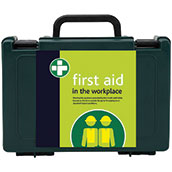 |
|
| British Standard First Aid Kits | 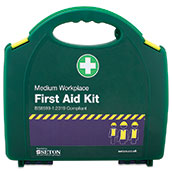 |
|
| Deluxe First Aid Kits | 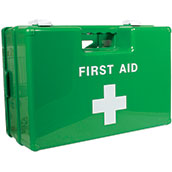 |
|
At Seton, we understand the value of providing quality incident support supplies in every work setting. With this in mind, accident treatment basics and accessories are a worthwhile relatively low-cost investment. However for even greater value you can opt for our workplace first aid bundles or our First Aid Stations which are ready-made solutions to provide highly visible and accessible medical support:
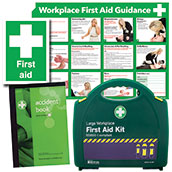 Our bundles make medical care easy as they contain all the signage and guidance that you need. They are convenient for you, as you can buy everything at once for a discounted rate. Perfect for new businesses starting out.
Our bundles make medical care easy as they contain all the signage and guidance that you need. They are convenient for you, as you can buy everything at once for a discounted rate. Perfect for new businesses starting out.
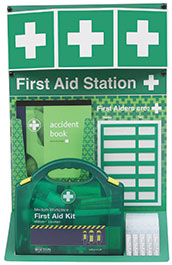 A wall-mounted support station is ideal for workplaces that do not have a dedicated medical care room. They are easy to locate due to their 3D sign and ensure that everything you need is in one place.
A wall-mounted support station is ideal for workplaces that do not have a dedicated medical care room. They are easy to locate due to their 3D sign and ensure that everything you need is in one place.
Many of our primary care packages and bundles are designed to be wall mounted, which serves as a great way to ensure your kit(s) are easy to find and quick to access in an emergency.
Replenish Stocks with a Refill Pack
Restocking your incident support equipment is easy. All of our British Standard Compliant packages have an equivalent refill which includes all the components you need to replace the original contents. We recommend buying a refill as well as a pre-built package initially, so that you already have back-up stock when items are used, or in the event of contents being taken or lost.
| Refill Pack | Suitable For | |
|---|---|---|
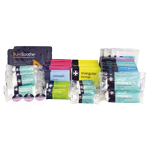 |
||
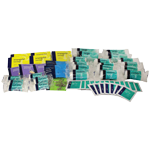 |
||
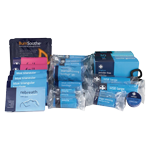 |
||
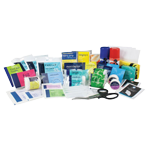 |
||
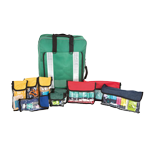 |
||
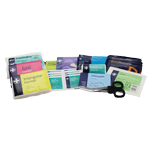 |
||
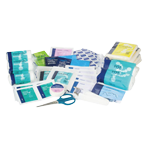 |
||
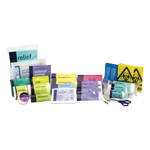 |
||
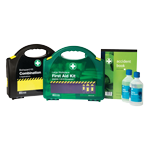 |
||
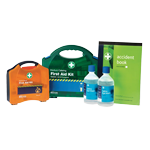 |
||
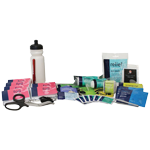 |
||
We aim to price all our accident response goods to provide maximum value to your team or organisation. Purchasing our ready-made refill packs is a great way to lower costs, without falling short on required supplies; and without having to purchase a full kit, including the bag or box, every time you need to restock your medical kit(s).
It is the responsibility of the first aider or an appointed person to ensure care supplies are replenished. An emergency can happen at any time so it is vital you can treat the casualty as soon as possible with the correct apparatus. Without the correct medical supplies the symptoms can become worse and infection could be more likely to occur. To make it easier, we provide a tamper-proof inspection label (shown below) so it can be easily identified if a box or bag has been opened. This will highlight to the person in charge that items have been used.
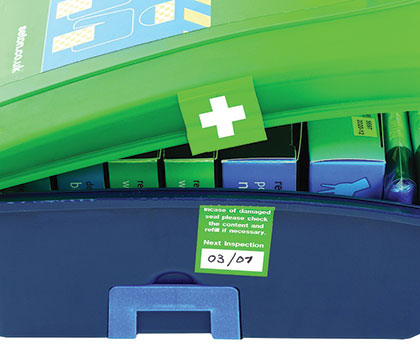
Tamper-proof Inspection Label
How often should you replace the contents of a first aid kit?
Although there are no specific rules regarding the regularity of checking and replenishing contents, it is important that somebody takes responsibility (this could be a first aider or the appointed person). It is crucial to re-stock the inventory after use, and also keep first aid kit refills on site for this purpose.
Many of the items on your contents list can perish over time, so it is important to check them regularly and ensure any expiry dates on the supplies have not passed.
Key aspects to check include the following:
- Container for signs of damage
- Adhesive items to ensure they have not lost their stickiness
- Metal objects have not rusted
- Dressings, bandages and plasters for signs of fraying or tears
It is a good idea to keep a basic item checklist so you know what you need to order in future. Many of our packages are supplied with a tamper evident label, where you can write on an inspection date and easily see if the items within have been used.
Where should you locate first aid kits?
Different sites and buildings operate on different scales and can vary considerably in terms of the layout and intricacy, therefore the location(s) of your emergency medical product stock will essentially depend on the risk assessment.
The location should be:
- Accessible
- Visible
- Identifiable with a first aid kit sign
Are you ready for the new BS 8599-1:2019 first aid kit standard?
As of January 2019, the BS 8599-1 regulation was reassessed to consider factors of modern living and as a result of this we have made changes to our product catalogue to ensure what we offer remains compatible with the new legislation. At Seton, we work hard to ensure it is easy for you to remain up to date, with changing legal obligations; by using our products. The major changes are explained in more detail below.
-
The composition of the BS workplace first aid kits has been changed slightly to suit the modern workplace environment by;
- Increasing in the number of tape rolls for medium and large collections
- The exclusion of safety pins to reduce incidents of needle injuries
- The amount of medium dressings has been reduced and the number of large dressings increased
- The travel kit is now called the Travel and Motoring Kit and conforms to the BS 8599-2 for motor vehicle apparatus. This was to avoid confusion between these two products and this new travel pack contains the same contents as the medium Vehicle First Aid Kit.
- Taking into account recent terrorism and other mass casualty incidents a Critical Injury Kit has been introduced:
- The other new addition is a Personal Issue Kit. This has been designed as an item to be provided to certain employees based on their role, as well as first aiders:
